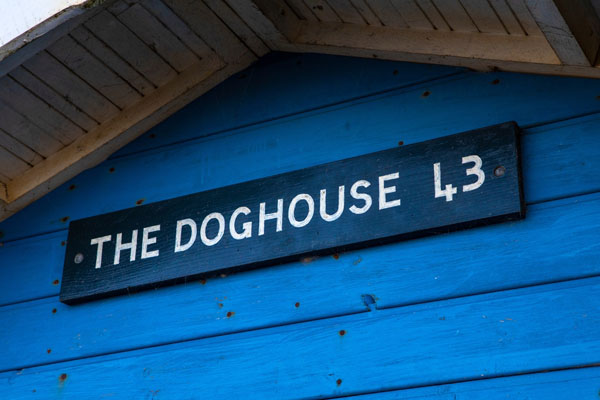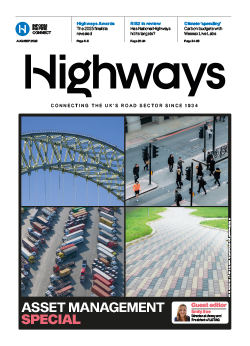Former Department for Transport director general and current director of the RAC Foundation Professor Steve Gooding looks into the somewhat obscure, and much obscured, issue of house numbers and asks the all-important question – who are the commissioners?
One of the fairly new but now commonplace experiences of modern household life has become a ring at the doorbell, meaning that someone has just hopped out of a delivery van and left a parcel or package propped against your front door.
Online purchases and home deliveries must surely count as the retail revolution of this century.

Aside from grumbling on those occasions when we’ve been out and found the package has been left with the neighbour that side (who we don’t really get on with) rather than this side (perfectly friendly), I haven’t thought that much about it, other than when opening the credit card statement, which generally brings a tear to my parsimonious eye (pictured, right).
But last week we found ourselves holding a parcel destined for someone else – right house number, wrong street. A relatively easy mistake to make, even in this world of pretty reliable sat-nav journey planners. ‘No matter’, I thought, ‘the correct street isn’t that far away, the dog, always up for a walk, and I will trot round and deliver the package to its rightful owner’. In the rain. I should have guessed that was, itself, a bad omen. Off we set.
To cut this potentially shaggy (and rather wet) dog story short, after about 40 minutes – 20 to get to the correct street and then another 20 trying to find the right house – my community spirit was utterly exhausted, replaced with a boiling rage as to why householders don’t all display their house numbers PROMINENTLY.
It’s bad enough that our quirky property numbering system – broadly speaking even numbers this side, odd numbers that side – makes for some strange results where there’s been infill development, or several separate properties have been knocked down and replaced with a single building, or there’s a cul-de-sac.
‘Ah, but,’ I hear you cry, ‘isn’t this problem largely solved by the fact that most properties are required to put their refuse into large wheelie-bins that they then festoon with huge fluorescent numbers?’ To which I’d respond: ‘Yes, but only if it’s bin day’. In genteel neighbourhoods like ours, various devices are employed to mask the bins at other times, behind privet hedges, fences or purpose-built bin stores. So I’ve done some, admittedly not extensive, research into the numbering of properties.
It didn’t take long to unearth a wave of unhappiness from delivery drivers, minicab drivers, and even ambulance and fire engine drivers, bemoaning the problems they often faced with finding the right property. Surely it’s in all of our interests to make navigating to our homes and businesses easier? Do we really want ambulance crews tapping tentatively at what turns out to be our next-door neighbour’s house? Do we want vans circling fruitlessly adding to our congestion and carbon challenges?

I’m sure avid readers of this journal will know that in the UK the practice of requiring the allocation and display of property numbers dates back to … well, the precise date is disputed, but I’m fairly sure that we can look to sections 64 and 65 of the Towns Improvement Clauses Act 1847*, which (I paraphrase) places a duty on the ‘commissioners’ to cause houses to be marked with numbers and even gives the commissioners the powers to go in and apply the number themselves and charge the cost to the householder should they fail to comply.
My challenge to readers is to help me identify who, in 2022, the ‘commissioners’ are. I have a suspicion that, over time, their powers and duties have probably migrated to one or other of the wonderful patchwork of local authorities we have developed over the last hundred and fifty years.
Now I know that resources are stretched in all parts of local government. Ruthless prioritisation is the order of the day. Authorities have, I think, focused their attention on the allocation of street names and property numbers, and have probably assumed, not unreasonably, that enlightened self-interest would cause us to ensure our numbers are boldly displayed. It seems not.
It crossed my mind to propose a local vigilante volunteer scheme under which I and others would be armed with a six-inch brush, a pot of white paint, a book of invoices, and the encouragement to daub away. But short of that – and I can see some shortcomings in the proposal – might it at least be time for a modest comms campaign, perhaps displayed on the sides of the seemingly ever-growing fleet of white delivery vans?
*and Section 21 of the Public Health Acts Amendment Act 1907 and sections 17 to 19 of the Public Health Act 1925.
Steve Gooding regularly writes for Highways magazine. Sign up for free here.





